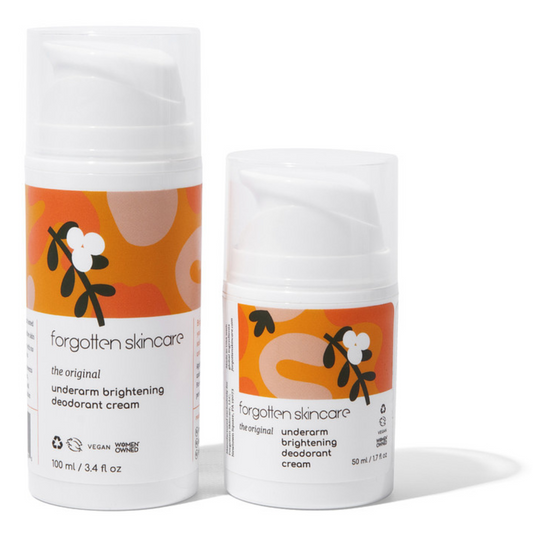The long, warm days of summer have arrived, which means more time spent outside with friends and family. Whether you’re hiking, biking, beaching, swimming, or hosting backyard BBQs, summertime is sun-time. While that’s great news for tanning, the sun can cause an increase in hyperpigmentation. If you start noticing an increase in freckles or dark patches of skin, you are experiencing sun-induced hyperpigmentation, a very common affliction. So, how do you avoid hyperpigmentation this summer? It’s really all about balance and understanding how our skin and bodies react to sun exposure.
Benefits of sun exposure
One of the biggest health benefits of the sun is that it helps our body manufacture vitamin D, which is needed for proper bone formation. Vitamin D also helps decrease inflammation, helps regulate our immune system, and ensures our nervous system is performing optimally. Not mention, the warmth of the sun just feels good on our skin.

Dangers of skin exposure
While some exposure to the sun is beneficial, it’s important to limit the amount of time skin is exposed, due to the sun’s harmful ultraviolet radiation (UVR). Sunburns are caused by over-exposure to UV rays, which damage and kill cells that exist in the deeper layers of the epidermis. One of the leading causes of skin cancer is frequent and extended exposure to UV rays. So, while brief bouts of sunlight on the skin is good, for the majority of summer, you’ll want to protect your skin to decrease your chances of getting skin cancer and preventing hyperpigmentation.
What is hyperpigmentation?
Hyperpigmentation is nothing more than a darkening of a person’s skin in spots or patches, usually found on the hands, face, underarms, thighs, knees, elbows, and occasionally, the stomach. Various factors cause hyperpigmentation; one of which is the sun.
Hyperpigmentation in skin is caused by an increase in melanin, the substance in the body that is responsible for color (pigment). Certain conditions, such as pregnancy or Addison's disease (decreased function of the adrenal gland), may cause a greater production of melanin and hyperpigmentation. Exposure to sunlight is a major cause of hyperpigmentation, and will darken already hyper-pigmented areas.
What is melanin?
Melanin is produced by cells called melanocytes. Melanocytes increase their production when exposed to the sun. Its production provides individuals with some protection against sun exposure. You can see melanin - it’s the pigment that gives our skin its unique and beautiful color. The more melanin your body produces, the darker skin you will have. In some individuals, the production of melanin can show up in spots and patches, called hyperpigmentation.
Melanin exists in the skin’s outer (epidermal) layer, which is why it’s visible. We get suntans as a result of melanocytes producing more melanin. When the cells eventually slough off, our tans fade.

Protecting your skin from UV rays
Individuals who have small amounts of melanin sunburn more easily than those who have more melanin. People who have light, fair skin should protect themselves from prolonged exposure to the sun.
Wearing sunscreen is one way to limit sun exposure. Sunscreen should be reapplied every two hours. Choose sunscreen that is SPF 30 or higher and apply it at least 30 minutes before exposure (it takes about 30 minutes for your skin to fully absorb the sunscreen).
Covering up sensitive areas is important as well. Wearing a wide brim hat is more than a fashion statement - it’s great protection against the sun. Linen is breathable and the light colors don’t absorb sun, protecting the skin even more. What’s more beachy than loose linen pants?
If at all possible, limit sun exposure between the hours of 10 a.m. and 2 p.m., when UV rays are strongest.

Skin products + sun exposure
If you’re using skin products that help decrease hyperpigmentation, it’s important to understand that some ingredients can make your skin more sensitive to sun exposure, like Beta Hydroxy Acids (BHAs) and Alpha Hydroxy Acids (AHAs).
Forgotten Skincare’s The Original is used by women as the perfect solution for uneven skin tone, razor burn irritation, ingrown hairs, and body odor. The Original contains Beta Hydroxy Acid, a naturally occurring, oil soluble acid that is known to fight bacteria (like the kind that causes underarm odor). Salicylic acid is the most common BHA and while the benefits of using it on your skin are proven, users must take extra precaution if they are going to be in the sun often.
Our cream is generally used in the armpit area, and thus naturally not exposed to the sun much; however, it’s important to use sunscreen on the areas of application that may be exposed to the sun.
Ensure an even skin tone by protecting your skin this summer! And if you’re looking for natural ways to decrease hyperpigmentation in your armpits, or just want a natural deodorant that actually works, check out The Original and get ready to feel bright, fresh and smooth. Uva ursi extract and vitamin C work together to brighten dark & uneven skin, while jojoba oil turns up the moisture and pink grapefruit keeps you smelling fresh.








